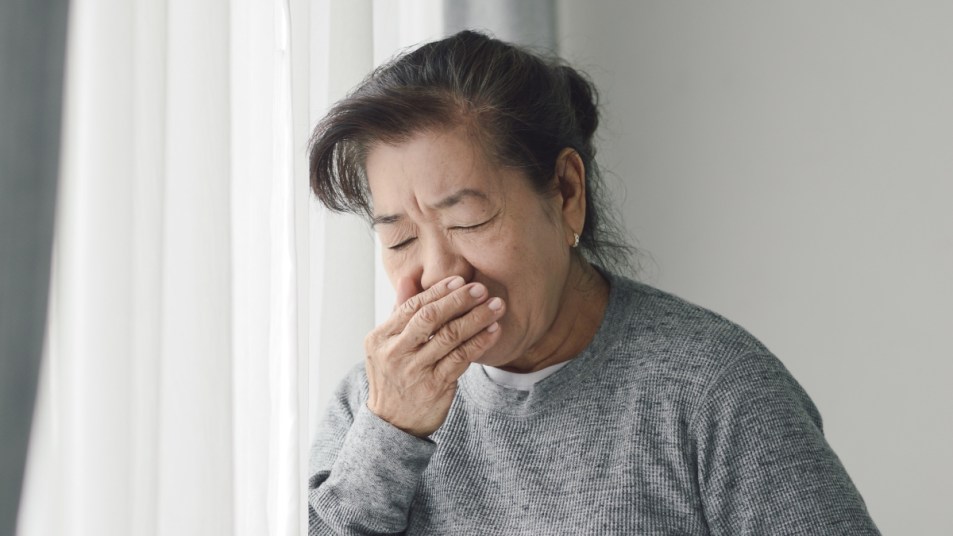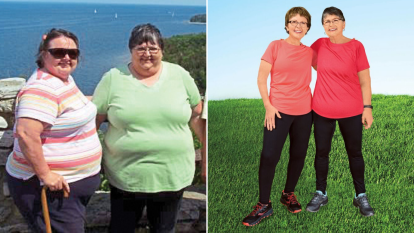4 Types of Home Air Pollutants That May Cause Exhaustion — Plus Tips To Get Rid of Them
You may not realize that your air quality is getting worse, until it starts to bother you.

We love cozying up inside when the temperature plummets. But sealing our homes to block the chill increases exposure to airborne pollutants. In fact, you may not even realize that the air quality in your house gets worse in the winter months — until it starts to bother you. Lung irritants (including air fresheners, cleaning supplies, exhaled carbon dioxide, emissions from cookstoves and heaters, pet hair and dander, and dust) can cause coughing and wheezing, which may lead to lung inflammation. And lung inflammation can create chronic fatigue. Fortunately, you don’t have to do a rigorous house cleaning to quickly improve your air quality. Check out these four tips below to naturally reduce your home’s air pollutants so you can breathe easy.
To reduce emissions from air fresheners, cleaners, and building material, invest in an air purifier.
While plants are a wonderful way to brighten up your living space and add oxygen in place of carbon dioxide, there isn’t enough evidence to show that they remove toxins from the air. Your best bet: an air purifier with a HEPA filter. HEPA filters (high-efficiency particulate air filters) can theoretically remove 99.97 percent of airborne dust, pollen, mold, and bacteria. They can also remove indoor air pollutants known as volatile organic compounds (VOCs) emitted from things like air fresheners, cleaners, and building materials.
To reduce chemical vapors from cleaning products, toss wipes outside.
We rely on disinfectants to kills germs during cold and flu season. But University of California scientists say their chemical vapors can waft from rags and paper towels tossed in kitchen and bathroom waste baskets, more than doubling the level of toxic glycol ethers in the air. To slash exposure, rinse rags and sponges right after using, and toss used paper towels and wipes into an outdoor trash bin. (If you want to be extra careful, wear a mask while you clean with strong disinfectants. Try a soft N95, KN95, or KF94 mask.)
To reduce carbon dioxide levels, keep bedroom doors open at night, and crack windows when you can.
Closing your bedroom door can cause exhaled carbon dioxide to build up in the air and reach levels of 1,200 parts per million, according to research from the Eindhoven University of Technology in the Netherlands. That’s enough to impede sleep and trigger headaches. The fix: Leave your door three inches ajar while you sleep. And when the weather isn’t blisteringly cold, crack a window in your bedroom, living room, and kitchen — or any room where you spend most of your time.
To reduce your reactions to dust and dander, use a Swiffer, and consider taking quercetin.
Swiffers are one of the best ways to reduce dust in your home, because they trap dirt and dust before it can fly into the air and irritate your lungs. (Plus: That long handle prevents you from having to bend.) But what happens if you’re already suffering from allergy symptoms caused by airborne dust and grime? Try adding quercetin to your daily regiment. A 2022 study found that participants who supplemented with quercetin, a natural antihistamine, for four weeks experienced relief from allergy symptoms. (Those symptoms included eye itching, sneezing, runny nose, and slip disturbances from allergies.) While study participants took 200 milligrams (mg) of quercetin twice daily, you may prefer to get a dose of quercetin naturally by savoring red onion soup: A 2015 study found eating a bowl of red-onion soup raised quercetin levels as effectively as a 544 mg supplement.
Note: Check with your healthcare provider before supplementing.
Bonus Tip: Delicious, Hearty, Tomato and Onion Soup Recipe
Use this soup to boost your quercetin intake and potentially reduce allergy symptoms and fatigue.
Ingredients (serves 4):
- 1 (16 oz) pachakge gnocchi
- 2 pounds tomatoes, diced
- 1 red onion, cut into wedges
- 2 cloves garlic
- 1 tablespoon olive oil
- 3 tablespoons tomato paste
- ¾ cup half-and-half
Instructions:
- Cook gnocchi according to package directions; drain.
- Toss tomatoes, onion, and garlic in olive oil; transfer to baking sheet. Bake at 400 degrees Fahrenheit for 30 minutes. Transfer to blender; puree.
- In pot, add gnocchi, tomato puree, ½ teaspoon salt. and remaining ingredients. Cook 8 to 10 min.
This content is not a substitute for professional medical advice or diagnosis. Always consult your physician before pursuing any treatment plan.
A version of this article originally appeared in our print magazine, Woman’s World.













